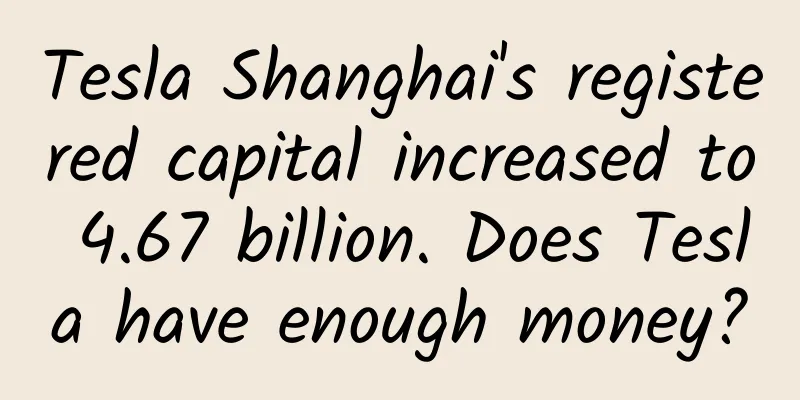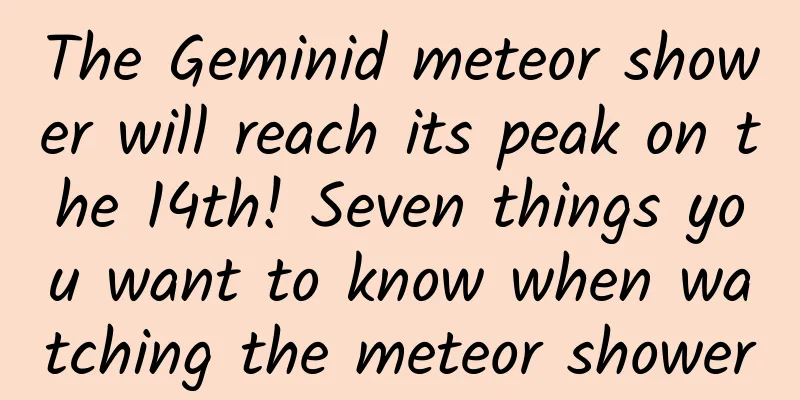Teachers’ Day is here again. Why do people like to wish teachers “have many students all over the world”?

|
Respecting teachers is a traditional virtue of the Chinese nation. Teachers educate students and cultivate talents, so they are naturally respected. It is Teacher's Day again. When people send their greetings to teachers, they often use a common saying, "Peaches and plums are everywhere in the world." Why do we use "peach and plums" to describe the talents cultivated by teachers instead of fruits such as apples and bananas? This story can be traced back to the Eastern Zhou Dynasty more than 2,000 years ago. Calligraphy works by Li Shaobai, a national first-class artist (Source: China Calligraphy Network) Words of enlightenment passed down through the ages According to legend, in the early Warring States Period, Wei minister Zi Zhi recommended many people to Wei Wenhou, who were scattered in the court and local areas. Later, Zi Zhi lost power, and those people ignored him and did not help him. Zi Zhi passed by Shandong and complained to the scholar Zi Jian. Zi Jian patiently explained: "This is your fault. If you plant peach and plum seeds in spring, you can enjoy the coolness under the tree in summer and eat peaches and plums in autumn; if you plant thorns in spring, you will not be able to enjoy the coolness in summer and have no fruits to eat in autumn. You did not examine the people you recommended before, and they are like thorns, how can they help you?" Zizhi had a profound understanding of this, and when he opened a school to recruit students, he paid attention to examining the students' character. He also planted peach and plum trees in the yard, and taught his students to blossom and bear fruit like them, and benefit the world. Many years later, Zizhi traveled to various countries in the Warring States Period, and the students he had taught all received him warmly. It can be said that "his students are all over the world." This story is found in Han Shi Wai Chuan (Western Han Dynasty), which is the earliest record of using "peach and plum" to refer to students or talents. This story also gave birth to the word "tree people", which means the important matter of cultivating talents. This is the prototype of "it takes ten years to grow trees, and a hundred years to cultivate people". Photocopy of "Han Shi Waizhuan" (Source: Kong Fuzi Used Books Network) Zijian cited peach and plum trees as examples because they were the most common and delicious fruits at that time . According to records, the most common fruits during the Warring States period were peach, plum, apricot, jujube, persimmon, etc. Among them, peach and plum are similar fruits, and most people know them. As for the common apples now, they were extremely rare during the Warring States period and were tribute to the court in the Qing Dynasty; bananas are tropical fruits, mainly produced in the south, but the south was not civilized during the Warring States period, so they naturally could not be spread to the Central Plains (including Wei State). Zijian, a cultured person, would not and could not use "apple banana" to describe students or talents. Long history and profound culture Peach and plum trees have a long planting history and profound cultural connotations in my country. Peach trees originated in China, and the most obvious evidence is the ancient peach pits unearthed from the Hemudu site (located in Ningbo, Zhejiang Province). From this, we know that primitive people began to eat wild peaches more than 6,000 years ago. After the Han Dynasty opened up the Western Regions, my country's peaches were introduced from Persia to Greece, Rome and other countries, and took root, blossomed and bore fruit in Europe. Peaches are now called "Persian fruits" by Europeans, but it is more appropriate to call them "Chinese fruits." The professional cultivation of peach trees began in the Southern and Northern Dynasties more than 1,400 years ago. "Qimin Yaoshu" (written by Jia Sixie) states: "Peaches are easy to plant but difficult to cultivate. If they are away from their native land, most of them will die, so they must be dug up and moved." Similarly, plum trees also originated in China, with a planting history of more than 3,000 years. More than 2,300 years ago, there were more than 10 varieties of plums in the Shanglin Garden, a royal garden built by Emperor Wu of the Western Han Dynasty. Professional cultivation of plum trees also began during the Southern and Northern Dynasties. "Qimin Yaoqiu" records: "Plums are durable. Even if the branches of a tree wither after 30 years, the fruit will not be small." Plum cultivation reached its peak during the Tang Dynasty, and was widely planted in the palace and among the people. Red and purple plums are dotted among the green leaves (Source: China Fruit Network) In ancient my country, peach and plum were given beautiful symbols, and there are too many records and articles about peach trees and their symbolic meanings. The earliest Chinese book that recorded peach trees was the Classic of Mountains and Seas (more than 2,000 years ago). Kuafu chased the sun, and his body turned into a peach forest after his death, benefiting the world. The earliest collection of poems in my country, the Book of Songs (about 2,000 years ago), contains a famous poem about peaches: "The peach blossoms are young and bright. The daughter is getting married, and she is suitable for her family" (Zhou Nan·Taoyao), which compares peach blossoms to beautiful things. Later generations thus created the idiom "escape young". In addition, peaches and plums are mentioned many times in the Book of Songs, the most famous of which is "Give me peaches, and I will give you plums in return" (Da Ya·Yi), which was later simplified to the idiom "give me peaches and give you plums in return". The first chronicle-style general history of my country, Records of the Grand Historian, mentions the idiom "Peach and plum trees are silent, yet people come to them of their own accord to form paths." The original meaning is that although peach and plum trees cannot speak, their beautiful flowers and sweet fruits provide shade, and people walk under the trees to create a path. This is used to illustrate that if a person is sincere and down-to-earth, he will naturally gain people's support and respect (Records of the Grand Historian, Biography of General Li). Peach blossoms (Source: Nitu.com) Since the Tang Dynasty, the word “peach and plum” has been used in many poems and essays to describe the cultivated outstanding talents. The most famous and direct one is Bai Juyi’s "Changzhuang Collection·Volume 33·Spring and Ling Gong People Planting Flowers in Green Field Hall" "Ling Gong’s peaches and plums are all over the world, why plant flowers in front of the hall?" The "Ling Gong" in the poem is Pei Du, a famous prime minister in the middle period of the Tang Dynasty. He is famous in history for recommending celebrities like Li Deyu and Han Yu, making use of famous generals like Li Guangyan and Li Su, and protecting poets like Liu Yuxi. He fully deserves the reputation of "peach and plums all over the world". Wide variety of products all over the world Throughout the ages, peach and plum have been one of the most popular fruits. In addition to their beautiful flowers and bright red ripe fruits, peach and plum also have the characteristics of strong adaptability, many varieties, and wide distribution. Peach and plum are both plants of the genus Prunus in the Rosaceae family, deciduous trees, which shed their leaves in the winter of the first year and bloom in the spring of the second year. They have the common characteristics of Rosaceae plants: they like light and are drought-resistant, so hot summers do not affect their fruiting. According to statistics, there are more than 2,000 varieties of peaches and plums in the world. The familiar peaches include fragrant peaches, honey peaches, flat peaches, etc., and plums include crisp plums, ox heart plums, cherry plums, black cloth plums, red plums, rouge plums, and prunes. Among them, the flat peaches in "Journey to the West" really exist in the world. They are native to Xinjiang and are now grown in northern my country. Flat peaches contain many beneficial nutrients. Because of their sweet taste, juicy taste, and fresh fruity aroma, they are called "longevity fruit." The official name of prunes is "European plums". They are native to southwestern France and were introduced to China in the 1980s. They are grown in northern China. When ripe, its skin is dark purple and its flesh is amber, which looks very appetizing. Prunes, also known as European plums (Source: China Fruit Network) Another reason why peaches and plums are loved is that they bear fruit for a long time and the fruit is nutritious. "Peaches bear fruit in three years, plums bear fruit in four years, and pears bear fruit in five years." Peach and plum trees bear fruit in three or four years from the time they are planted, and then continue to bear fruit for thirty or forty years. Peach and plums are rich in carbohydrates and can be eaten raw, canned, brewed into fruit wine, or made into peach or plum preserves. They are also medicinal materials for traditional Chinese medicine. The dried seeds of peaches are called "peach kernels", which can promote blood circulation and remove blood stasis. Plums were regarded as a beauty fruit by the ancients. They can promote body fluid, nourish the liver, and clear away heat. The King of Medicine Sun Simiao said in his book that "(plums) are suitable for people with liver diseases." Teachers have a long history, profound cultural flavor, are all over the world, are rich in nutrition, have long-lasting effects, are good medicines, and are extraordinary in the ordinary. It is really appropriate to express respect for teachers by saying "Peaches and plums are all over the world". On the occasion of the 18th Teachers' Day, I wish all teachers in the world "Peaches and plums are all over the world"! Happy Teachers' Day to all teachers in the world (Photo source: Red China Network) References: 1. "History of Peach Cultivation in China", by Sheng Chenggui and Wang Yelin, Journal of Nanjing Agricultural College, No. 2 (June 1957) 2. "Plum and its high-yield cultivation technology", author Zhang Linghui, Ren Xiaojian, Li Yong, "China Fruit and Vegetable" 2019 Issue 2 3. Classics such as "Classic of Mountains and Seas", "Book of Songs", "Han Shi Waizhuan", and "Records of the Grand Historian" Author: Wei Deyong, member of Shenzhen Writers Association, Guangdong |
<<: Can low GI foods really help you lose weight? Find out the truth in this article!
Recommend
How to scientifically improve conversion rate and click-through rate?
When it comes to Internet advertising , everyone ...
How much does it cost to customize the Lhasa teaching materials applet? What is the price quote for customizing the Lhasa teaching materials mini program?
The mini program provides convenience for publici...
Microsoft report: Maximizing AI opportunities
Microsoft has released a new report, "Maximi...
Can an annual physical examination really help you “detect cancer early”?
Most people regard routine annual physical examin...
Essential for driving! Nine pictures to help you avoid these "blind spot killers"
Qingming Festival is here The number of people vi...
Perfume and poop contain the same substance? The most "smell" popular science is here
This article was reviewed by Chu Yuhao, PhD from ...
Microsoft WP survival dilemma: mobile phone manufacturers publicly abandon the brand or it will disappear
The gap between WP and Android and iOS market sha...
International Archives Day: Take a look at the wonderful journey of these precious archives →
Archives connect the present and the past, and ca...
Google moves V8 code to Github
Following Google's plan to move the Go langua...
FF cuts all employees’ salaries by 20% due to financial difficulties. Who will be the new buyer after Xu Jiayin?
On October 22, an internal email from FF showed t...
The latest news about the 2022 Zhurong: When will it land on Mars? Why is there no movement?
Zhurong is the Mars rover for the Tianwen-1 missio...
Today’s College Entrance Examination丨The “fruits” are ahead, pick them bravely!
Today is the first day of the national college en...
How do smartwatches and fitness trackers reveal our mental state?
Planner: Chinese Medical Association Reviewer: Li...
Does the Wenchang Pagoda need to be consecrated?
The most reliable way to consecrate the Wenchang ...
Why is kiwi fruit called kiwi? The truth is that it is a bird!
Do you know which fruit is named after both a mon...









